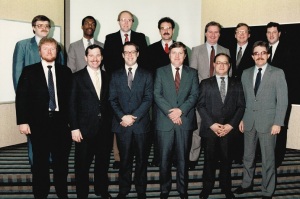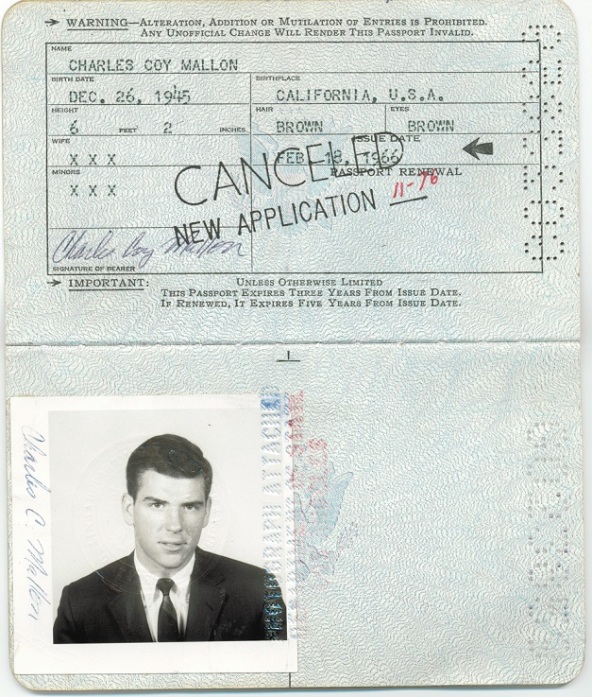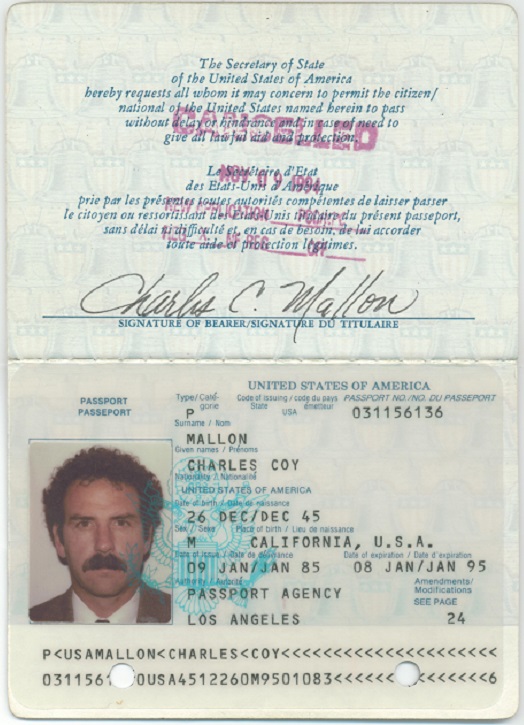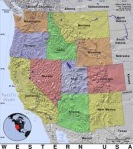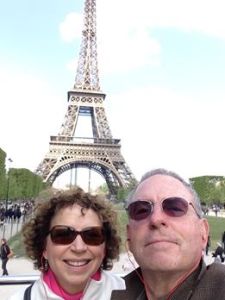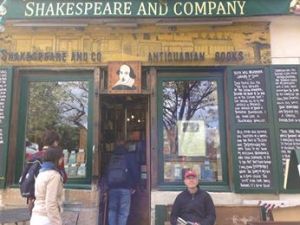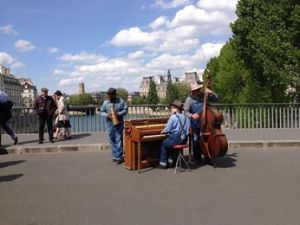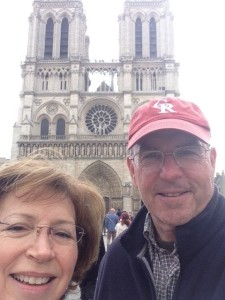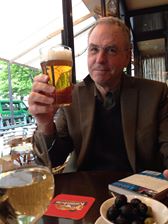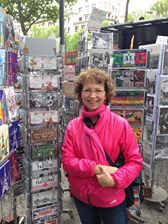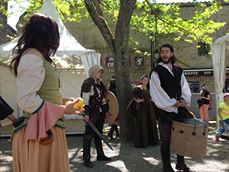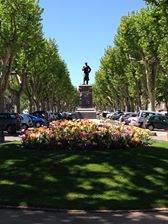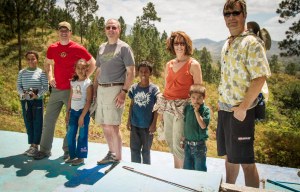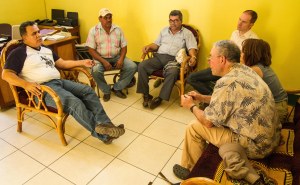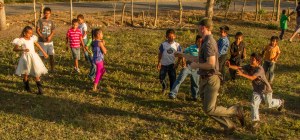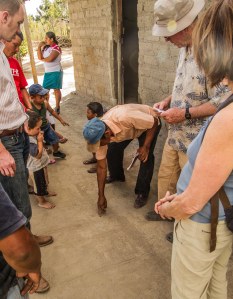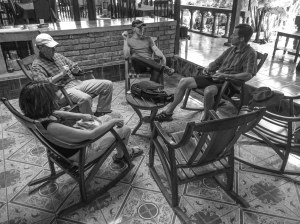Peanut
 Cindy and I have a little, 9 pound black dog named Peanut that we think the world of. We picked him up from MuttSavers on October 15th, 20011. He had recently been neutered and they told us he had come in from Kansas and was about one year old. So we decided his birth date was 10/15/10.
Cindy and I have a little, 9 pound black dog named Peanut that we think the world of. We picked him up from MuttSavers on October 15th, 20011. He had recently been neutered and they told us he had come in from Kansas and was about one year old. So we decided his birth date was 10/15/10.
Cindy had lost her Schnauzer, Cassie, the previous February, which was quite hard on her. She wasn’t really ready for a new animal yet, but occasionally she looked on-line at puppies who were up for adoption. We had recently dogsat for a neighbor’s miniature poodle and liked the dog.
Shortly afterwards Cindy saw on her computer that MuttSavers was making puppies available for adoption at a pet store not too far from us. The dog they were featuring was a poodle mix who later would became Peanut (they had called him Fritz). We both agreed that such an adorable dog would have little chance of still being available when we got there, but we decided to see what else they might have. To our amazement when we arrived, despite there being a lot of people looking for pets, there was our precious little guy, curled up all alone in a floor cage. We quickly walked over, picked him up and didn’t put him down until all the paperwork was filled out, fees were paid and he was ours.
Since then he has become an integral member of our household and a favorite with all who meet him. We could not be more pleased
Watch this> Peanut plays bocce ball
My Time With Fort Howard Paper Company
I feel I need to write a history of my experience with Fort Howard Paper Company, but I find it hard to get started. After all, I spent 16 years with them, the longest tenure with anyone in my working career and I should have something to say about all that time. In truth, much of it is a blur and there is a lot I do not remember clearly, perhaps because there was so much going on in my personal life at that time. Additionally, I never felt in sync with the culture of the company and always looked at it as a job. Many others in the company were very invested in their career there, I never was.
So, here goes, this is what I remember and/or think is important and/or want to write about.
 I was hired by Fort Howard Paper Company April 6, 1983 as the Los Angeles District Manager with a salary of $37,000/yr by Bill Yarnall. I knew Bill from my days at Scott Paper, where I had worked for ten years. For some reason that now escapes me, Bill had left Scott to go to work for Fort Howard about a year earlier as their West Coast Division Manager. He needed to replace the district manager in Southern California and, with my experience at Scott Paper, I was a good fit. I had just sold a Management Recruiting franchise in Seattle that I had started up 18 months earlier in partnership with another friend from Scott, Don Urie. I did not do well in the recruiting business for a variety of reasons and was happy to get away from it and have a job with a salary, car and benefits. So I moved from Seattle to Hermosa Beach, California with my girlfriend at the time, Constance Grecco.
I was hired by Fort Howard Paper Company April 6, 1983 as the Los Angeles District Manager with a salary of $37,000/yr by Bill Yarnall. I knew Bill from my days at Scott Paper, where I had worked for ten years. For some reason that now escapes me, Bill had left Scott to go to work for Fort Howard about a year earlier as their West Coast Division Manager. He needed to replace the district manager in Southern California and, with my experience at Scott Paper, I was a good fit. I had just sold a Management Recruiting franchise in Seattle that I had started up 18 months earlier in partnership with another friend from Scott, Don Urie. I did not do well in the recruiting business for a variety of reasons and was happy to get away from it and have a job with a salary, car and benefits. So I moved from Seattle to Hermosa Beach, California with my girlfriend at the time, Constance Grecco.
Fort Howard, headquartered in Green Bay, Wisconsin, was the major low cost sanitary paper (towels, tissue, napkins and wipers) manufacturer in the nation. They sold their products through a network of distributors to the away-from-home market (not grocery stores) and were market volume leaders in all parts of the country except for the west coast. All their products were made from relatively inexpensive recycled paper, something at that time our competitors, whose raw material was virgin wood pulp, used to sell against us. With the public’s growing concern for environmental issues, this weakness, over time, became a strength.
As the Los Angeles District Manager I had about 6-7 representatives assigned to me. With a few exceptions, I found them fairly average in talent, under trained and poorly motivated. The reason for this soon became apparent; Fort Howard’s salary schedule for that part of the country was not competitive. We could not hire good quality salespeople, unless it was their first job and they needed to get their foot on the first rung of a career ladder. If any of our people developed into good employees, we would soon lose them to another company willing to pay more, including our competitors. We thus continually lost our good people and remained stuck with the duds.
I did become good friends with one of the many hires we went through at this time. Dai Morgan had come over from Wales to play rugby at Long Beach State. He turned out to be an excellent salesman. I went with him back to the UK on several Rugby themed trips. He eventually met his wife at my wedding in Seattle. Over the years we have lost contact.
Despite alerting upper management to the problem with compensation and repeatedly requesting upgrades in our remuneration packages, it never changed. Due to this it continued to have a profound impact by limiting our ability to build good sales teams. It was also the major reason I could never fully commit to the company.
I believe the reasons for this deaf ear to the reality of the marketplace by company leaders was due to the headquarters being located in Green Bay, that the company was the industry’s low cost producer and that they were wholly manufacturing oriented.
Green Bay in 1983 was an old mid-west mill town with a world-class football team and a populations of about 100,000. For those who did not go to college, getting a job at the Fort Howard Mill (proudly non-union) meant that they were set for life. The company had started locally years ago and had prospered to become a major corporation by the 1970’s. Loyalty to the company was strong. But the company was small town-centric and many company-wide decisions were based upon local upper-state Wisconsin norms. A good salary in Green Bay was not a good wage in Los Angeles, nor in most of the rest of the country as well. Additionally, the hard working employees there often lacked awareness and worldliness. Suggestions for change, from salaries and products to marketing, were often met with some form of “why should we change, this is how we have always done things and look how successful we are?”
And, the famous sign reading “Tittle Town” at one entrance to the city, referring to the Green Bay Packers glory years, was rusted.
Please understand, these were fine people, it was just that I was from a different corporate environment and never felt, as I said earlier, in sync with the company ethos.
I believe much has changed there since the time I am writing about.
Low Cost producer: As mentioned above, Fort Howard made their paper products from relatively inexpensive recycled paper, as opposed to the more costly tree-sourced “virgin” pulp that our main competitors like Scott Paper and James River were using. Although many end users felt that our products were of lower quality than those of other manufacturers, the company always had the flexibility to find a pricing level that made the Fort Howard product the better value. So much of the time, especially before being made of recycled paper came into vogue, our products were sold on price. I always felt that our company viewed their national “sales force” , not as an entity to “sell” the product, the people in Green Bay who controlled the pricing would do that. I believe upper management looked at us as a necessary evil that was in place to maintain contact with distribution and end users as well as to send market (price) information back to the real decision makers at HQ. There was little emphasis on feature and benefit selling.
Wholly manufacturing oriented: During an earlier time when I was with Scott Paper, there were often paper shortages during which manufactures could not keep up with the demands of the marketplace for disposable towels, tissues and napkins. For this reason a good relationship with a reliable manufacturer of these items was of primary importance to the distribution community. Because of this we were able to retain good profit margins and raise prices regularly. We were also able to be selective in the distributors we sold to. They were motivated to meet our mutual sales goals so that we would not be “forced” to expand our franchise in their market to their competitors. But with the high profits available in our industry, conditions began to change. As I left Scott, we and our competitors started a paper-machine-building war to take advantage of this money making opportunity. And, no one more so than Fort Howard, who eventually expanded from their one mill in Green Bay to additional facilities in Muskogee, Oklahoma and Rincon, Georgia. Each mill contained multiple paper making machines at a price of approximately $250,000,000 each to build in 1980’s dollars. Suddenly there was an oversupply of sanitary paper products and a lot of pressure on the sales force to move it. Prices were cut and elaborate rebate programs were set up for distribution. Within a few years the leverage in negotiations changed from manufactures who controlled the product to distributors who controlled the market (the end users to whom they sold).
There was something else at Fort Howard that was new to me. With their extensive line of paper napkins, they were in a strong position with food service distributors and it represented a significant portion of their business. As I was leaving Scott, they were just getting into food service items, but Fort Howard really dominated the market. This of course meant I was dealing with these food service distributors a good deal of my time. They were different from the paper and janitorial distributors I was accustomed to working with. These traditional types of distributors were not only looking for a good price, but also a partnership that provided them with innovative products, training for their sales representatives and help selling to the end user. While food service distribution was also looking for these things, they were much more centered on “what is your price today and what type of rebate programs can you set me up on”. I believe this was mostly a reflection of the type of end users they called on. Restaurants wanted the best price and could not care less about other concepts. It wasn’t much fun to be so often in an environment where your future depended upon your next deal.
Another change that was occurring in the sanitary paper industry was the consolidation of distributors as the big fish bought up their smaller competitors. This meant that we had fewer clients upon which to call and that each one of these was important to our annual volume goals. Lose one of these accounts, or just get de-emphasized with them, and the whole year could be ruined.
Just at the time I joined Fort Howard in 1983 they purchased Sweetheart Cup. Sweetheart was a Baltimore based company that was  started years ago by immigrant brothers from Russia. They originally made ice cream cones and, over time, expanded into disposable cups, containers, utensils, etc. for the take-away food industry. Fort Howard looked at it as a natural extension to their food service line. They were especially interested in a new thin foam-like hot cup technology that Sweetheart had developed and called “Trophy Cup. This merger did not go well for a number of reasons. My impression was that the Sweetheart systems and facilities were tired and outdated. In 1985 We attempted to integrate their sales force and supply chain into ours and it was a disaster. My sense was that many on the Sweetheart side did not want this to happen and put little effort into the process. Lost and delayed orders, lids and cups that did not fit, billing issues, deductions from bills by distributors, etc. made this marriage a nightmare.
started years ago by immigrant brothers from Russia. They originally made ice cream cones and, over time, expanded into disposable cups, containers, utensils, etc. for the take-away food industry. Fort Howard looked at it as a natural extension to their food service line. They were especially interested in a new thin foam-like hot cup technology that Sweetheart had developed and called “Trophy Cup. This merger did not go well for a number of reasons. My impression was that the Sweetheart systems and facilities were tired and outdated. In 1985 We attempted to integrate their sales force and supply chain into ours and it was a disaster. My sense was that many on the Sweetheart side did not want this to happen and put little effort into the process. Lost and delayed orders, lids and cups that did not fit, billing issues, deductions from bills by distributors, etc. made this marriage a nightmare.
In other words Fort Howard had their issues like any other company of their size and I felt fortunate at that time to be hired to help them work through some of them.
Los Angeles District Manager April 1983 to April 1985
I threw myself into the job. First I spent time getting to know the distributors and doing a lot of training and “ride-withs” with the
sales force. We had some significant turn over of personnel, some because they didn’t like the changes we initiated. But we got good results and we were awarded District of the Year one or two times. As the past record in LA was so poor, winning these was not that hard and meant little to me.
I lived a block from the beach and enjoyed going home each evening from the heat and smog of the LA basin to the laid-back coastal atmosphere. I often ran on the beach , followed by a few minutes of body surfing. Of course it cost more to live there but I felt it was worth it. Writing this I can still smell the ocean and feel the breeze.
After two years there was an opening back in Seattle for the same level job of District Manager that I had in LA. My friend and boss, Bill Yarnall, to my every lasting appreciation, transferred me back up there. He got flak from Green Bay over this, as Los Angeles was a much bigger market, but countered truthfully that if Fort Howard did move me back, I would probably do it myself with a different employer when the first opportunity came along.
Seattle District Manager April 1985 to April 1991
I was happy to be back in the Northwest, I never planned to leave. The market environment and the condition of the sales force were much the same as I had found in Los Angeles. But we started to turn things around and would win a number of District of the Year awards.
The big challenge for me, as well as everyone else in the company, is that we attempted to integrate Sweetheart into our sales force at this time. There were so many screw ups (some perhaps intentional) and I knew so little about that product line, that every day was difficult. I can remember a number of times, as early as 10:00 a.m., laying on my back on the floor in my home office, trying to let the tension flow out of me.
In 1991 I was invited to interview for the Western Division Managers position, then located in Dallas. This was not something I wanted to do, but ended up being offered and accepting the new opportunity. See the details here.
Western Division Manager Boulder, Colorado April 1991 to August 1999
I spent the first six months working out of the old Division office in Dallas before we could get things moved to Boulder. As there were many re-organizations of territories over the years that I was a Division Manager, at one time or another I was responsible for most of the geography west of Missouri River. I usually had 4 or 5 district managers reporting to me and they in turn had 5 to 7 sales reps each. Our Division office was in downtown Boulder and we had an office manager there.
I have often described this position as flying out on Monday morning to go to places I did not want to go to, to see people who did not want to see me and return on Friday to a weekend of paperwork, only to be repeated the following week. While this is of course an exaggeration, it does express some of my feelings for the job. Additionally, true to Fort Howard’s philosophy, I was significantly underpaid for this level of responsibility.
One good thing that did happen over this time was that the concept of “recycled” became much more desirable, which cast those representing Fort Howard into a more positive competitive position.
 In 1997 Fort Howard and James River merged and became James River. It is apparent now in retrospect that the goal of this new entity was to drive up profits, by any short term means possible, to put the company into a good position to be sold.
In 1997 Fort Howard and James River merged and became James River. It is apparent now in retrospect that the goal of this new entity was to drive up profits, by any short term means possible, to put the company into a good position to be sold.
Truthfully, for the last few years I had been just going through the motions necessary to keep my position going. With the new Fort James philosophy in place of reporting in each week with the new deals we had been able to cut with distribution to drive in yet more volume, I reached a point where I no longer cared and of course this became evident to my management. Based upon my longtime service with the company, I was offered a demotion, at no loss in salary, to the Denver District Managers position. I turned this down, as I was completely burned out on anything to do with the organization, and accepted a termination package. So my career with Fort Howard/Fort James died a quiet death.
So, if I was so uncommitted to this employer, why did I not leave them much sooner? Well, I have no good answer for that other than that no one else offered me a position that I was interested in and my poor experience with going out on my own with Management Recruiters was such a failure, I was hesitant to try something like that again. Additionally, all my significant business experience had been in the away-from-home sanitary paper business and I did not feel I could duplicate my salary outside that industry.
My International Travels
Below you will find copies of my passports over the years that chronicle my international travels as well as changes in my appearance.
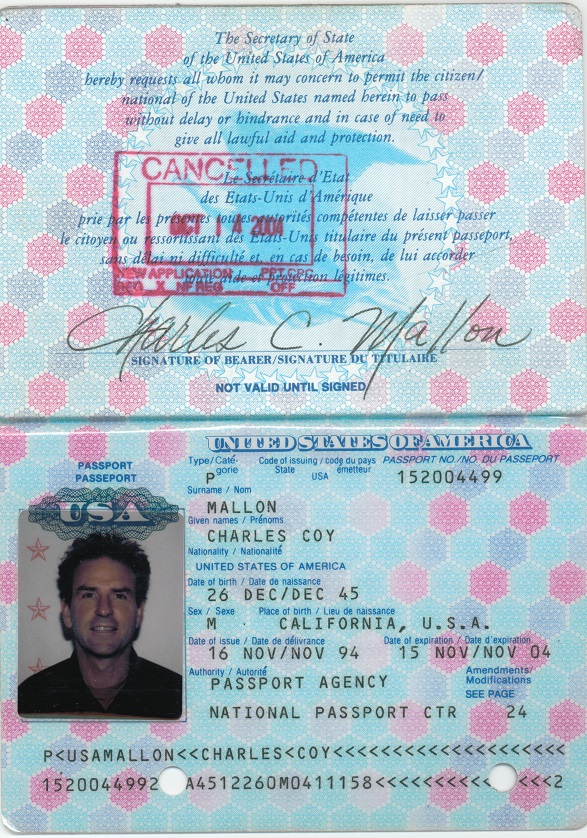
Entries include Mexico, Netherlands, Costa Rica, Bolivia, Chile, Ecuador, Venezuela, the Dominican Republic, Argentina, Uruguay, Germany, Portugal and Ireland.

Entries include Chile, Hong Kong, United Kingdom, Macau, New Zealand, Nicaragua, Spain, Hungry, Austria, Czech Republic, Germany and France.
I’m A Westerner
No, I don’t think that I am a cowboy, but rather that I was born and raised in the western part of the USA and feel most at home here.
It’s not as though I have not experienced other parts of our country. I have lived in both the Mid-West (Nebraska) and New England and travelled extensively in all other areas.
Here are some of the things that come to mind that differs the west from other parts of our country.
* Wide open spaces with mountains often in the distant view. We have plains and deserts, low humidity and, compared with eastern, southern and mid-western states, few insects.
* Although regional accents are diminishing, people in the west talk like me. Folks elsewhere speak differently.
* Our cities are new and less crowded and the buildings are modern and bright.
* People here look fitter than in the Mid-West, East and South and we smoke a lot less.
* When I go to a sporting event here, I support the local team. There are always a lot of newer arrivals who come out to cheer for their old home team from wherever they came. Some make themselves difficult to like.
* People here tend to move about more than the rest of the country and, regrettably, generations often live far apart.
* In much of the west Mexico and its culture is a constant presence.
* Descendants of European emigrants do not live in ethnic neighborhoods here.
* In my opinion St Louis is the western most of the eastern cities and Kansas City is the eastern most of the western cities.
* My daughter lives in Massachusetts and I enjoy visiting her often, but New England is half way between here and Europe in more ways than distance.
* The West, being newer certainly doesn’t have as much history and perhaps as not much culture as elsewhere.
Summing up, we are a little different here and it feels like home.
Boulder, Colorado March 28, 2014.
France April 17 to 25, 2014
Cindy and I spent four days in Paris and an additional three in Toulouse, France. We stayed at a Marriott south of the Latin Quarter while in the capital city and took their excellent Metro system to see all the major sites; the Eiffel Tower, Arc de Triomphe, Champs-Elysee, Notre Dame, Museo de D’Orsay, etc. As it was Easter weekend (they take Monday as a holiday as well), the crowds were huge so we only waited in line for the D’Orsay and saw the rest from outside. We did not even attempt Versailles and the Louvre.
The days of aspiring artists and writers like Hemingway, flocking to Paris after World War I because the city was inexpensive and the living was easy, are long gone, as we found everything pricey, even in the out of the way shops and restaurants. Long past as well is the reputation from the days of De Gaulle of Parisians for being rude to Americans. We were universally treated with respect and kindness.
From Paris we took the bullet train down to southern France and spent three nights in the delightful center of Toulouse. The town was full of wonderful buildings and gardens as well as charming plazas and squares with lively outdoor cafés filled with happy, talkative patrons. Everyone however appears to smoke.
From Toulouse we took a day train trip down to the old fortress town of Carcassonne. I had recently read a novel that took place in the 1200’s when the walls were breached by the northern French with the support of the Catholic Church, so was interested in seeing where the action had taken place.
Cindy dutifully took pictures and kept the faithful at home fully up to date on our big adventure with Facebook entries. And, we walked and walked, good training for the Bolder Boulder next month.
It was a good trip for both of us, especially Cindy who was able to fully get away from work responsibilities.
Jalapa Valley, Nueva Segovia, Nicaragua
March 24 to April 1, 2014
Five friends from the Rotary Club of Boulder Valley, Maud and John Kenyon, Bart Swanson, Travis Ramos, and me, had a busy and fulfilling week in Nicaragua. We went there for both the adventure and to check into clean water projects that Travis’ company, Second Mile Water, was organizing in the small pueblos around the city of Jalapa.
Jalapa is an agricultural center (tobacco and coffee) in the mountainous highlands of northern Nicaragua, just south of the Honduran border. Many internal immigrants are attracted to the area for the field labor jobs on offer. They have established ever expanding settlements of block-built homes on free or very inexpensive land along the paved roads of the valley. These homesteads often lack basic services such as access to potable water. Until a well-designed system (costing $35,000 to $60,000 for smaller villages of 500 or so inhabitants) is in place, they either access contaminated water from local streams or similar “grey” water from shallow wells.
Second Mile Water’s objective is to build the appropriate system, either with deep wells or water sourced high in the mountains, with funds lent from the company to the villages as well as with additional monies and labor contributed by the communities themselves.
Once the project is completed, all serviced homes are charged a monthly fee. Most of that which is collected is set aside in a community controlled account designed to pay for maintenance and repair of the infrastructure of the project. This is why the company is called Second Mile Water. The first mile is to construct the system. The second part, the on-going payments, are to keep it running. This is the most difficult part and hence the name Second Mile. A percentage of the monthly payments is sent back to 2MW ostensively to pay back the loan, but actually it will be used to fund future projects.
We met with Rotary Club of Somoto, who had been the local partner for the first project 2MW completed in the community of Pasmata, to secure that club’s blessing going forward. Later we met with a club in Ocotal, which is closer to Jalapa and had recently been restarted. Ocotal was very interested in participating as well and sent one of their members, Francisco, to Jalapa to meet with us and potential new clients.
Here are the communities we met with-
Pasmata: Their new mountain-collected, gravity-fed water system is up and running. We worked with them to put together a project completion celebration party that was held on Sunday. Most of the village children came as well as a good number of mothers and a few fathers. Speakers spoke, food was served, loud music was played and a ribbon was cut. Travis played with the kids from start to finish.
El Bosque: Their deep water well has been dug. They now need to have an 8 meter water tower built, install a pump and have a network of pipe laid to connect the homes. We met with their water committee and a Maestro de Obras to discuss the building of the tower.
El Trapiche: Just getting started. We met with their water committee and hammered out the details of a contract that 80% of the residents will have to sign to get started. They want to get going before the rainy season, but Travis told them that he had to secure more funds before he could commit.
Travis ran the show, John was a Pied Piper with his camera, Maud interacted with everyone, Bart offered building advice and I served as interpreter, sometimes better than others.
Una presentación corta de la vida de Charley Mallon
Nací en Hollywood, California y crecí en el lado este de la ciudad de Los Ángeles.
Sin embargo, tengo raíces muy profundas aquí en el estado de Colorado. Mi padre nació en Denver en el año 1913 mientras que su padre, mi abuelo, trabajaba para el periódico Denver Post.
Mi familia-
Cindy Schlager es mi “otra mitad”, como nos decimos. directora de traslados para una compañía inmobiliaria, Wright Kingdom. El único problema que tenemos en la relación es como llamarnos, somos demasiado viejos para decirnos “novios”. Ella también es la campeona de este año de “Bailando con las Estrellas de Boulder”.
Mi hijo, Timothy, es bombero y vive en Lafayette, Colorado. Él es el héroe de la familia y es ingeniero en el Rocky Mountain Fire District. Timothy está casado con Janette Hrubes. Ella tiene dos clínicas fisioterapéuticas en Boulder y Brighten que se llaman “Peak Form”. Ellos tienen una hija, mi nieta pelirroja, Mackenzie.
Mi hija Kerry vive al norte de Boston Massachusetts y es gerente de proyectos para una compañía farmacéutica. Ella está casada con Aaron quien está encargado de una tienda que pertenece a su familia. Ellos tienen a mis otras dos nietas, Annabelle de 10 años y Kiki de 8.
Mis hijos tienen matrimonios excelentes, familias felices, buena salud y empleos que les gustan. ¿Qué más puede un padre pedir?
Después de graduarme de Junior College, o sea una universidad de dos años, me uní al Cuerpo de Paz en un programa de Recreación Dirigida. Me asignaron a una ciudad que se llama Puerto Ordaz en la mitad de los llanos de Venezuela. Puerto Ordaz está situada en la confluencia de los ríos Orinoco y Caroní. El Caroní es bien conocido por tener la catarata más alta del mundo, Salto Ángel.
Allí trabajaba en una escuela primaria católica que se llamaba Fe y Alegría. La escuela tenía unos campos deportivos grandes que yo abría después de clase y los fines de semana para que los jóvenes del barrio pudieron divertirse jugando deportes y otras cosas recreativas. Yo organizaba eventos y torneos y también era entrenador de equipos de béisbol, baloncesto y fútbol. Durante el día escolar enseñaba clases de educación física e inglés.
Después de dos años, cumplí mi contrato y regresé a EU. Luego, terminé mis estudios universitarios con un diploma de Estudios Latinos Americanos.
Mientras estudiaba me involucré con el deporte del Rugby. Participaba para el equipo de la escuela y de hecho, en los años siguientes, jugué para muchos clubes diferentes.
En mi carrera profesional hice muchas mudanzas a ciudades diferentes. Entonces, buscaba un club local de Rugby y después de participar en una práctica con ellos, usualmente tenía 40 amigos en este nuevo local.
Desde entonces, he viajado por muchas partes del mundo jugando y mirando Rugby.
He sido miembro del Club de Rugby de Boulder por más de 20 años y la mayoría de mis amigos vienen de este deporte.
Ahora, Entonces, ¿qué hace una persona con un diploma en Estudios Latinos Americanos?
Bueno, lo que yo hice fue conseguir un empleo de vendedor de papel higiénico por 26 años con grandes empresas Scott Paper Company y Fort Howard Corporation.
Yo trabajaba en el sector “fuera de casa”. 60% de los productos de papel personal; toallas, servilletas y papel sanitario es vendido por bodegas y supermercados. El otro 40% se vende por distribuidores a hoteles, escuelas, fábricas, etc. Esta es la parte del negocio en la que yo laboraba.
Empecé en Los Ángeles y mientras yo subía la escalera de las compañías, hice escalas en Portland, Omaha, Boston, Seattle, Los Ángeles, Seattle y finalmente, Boulder en 1991.
En 1999 trate de jubilarme pero cometí dos errores. Primero, no tenía suficiente dinero y segundo, pensaba que no querría trabajar más. Se entiende no tener bastante dinero, pero la verdad es que solo no deseaba continuar con el mismo tipo de trabajo.
Entonces, después de dos años y medio de solo viajar y jugar golf (siempre pensaba que mejoraría, pero nunca lo pude lograr) empecé a trabajar de nuevo. Abrí un negocio de ventas de seguros de salud para individuals, familias y auto empleados. O sea, gente que no recibía ese tipo de seguro de su empleo, que es la norma.
Conducía negocios desde la cocina de mi casa/oficina y en los 11 años que tuve la compañía, reuní con más de dos mil clientes. Yo solía decirles que yo tenía que tratarles bien, porque ellos ya sabían dónde yo vivía.
En octubre del año pasado, recibí una oferta, no solicitada, de otro corredor para comprar el negocio. Con todos los cambios en la venta de seguros que están por realizarse con el cambio del año, decidí aceptar la proposición.
Entonces, hoy día estoy desempleado, esperando hasta que la próxima cosa que se presente.
Mis intereses son leer, ejercitarme, jugar Euchre, viajar (muchas veces a ver eventos de Rugby), continuar con la meta de mi vida de poder dominar el español y tomar cerveza con mis amigos.
My Cousin Mary Jo
Wow, first cousin Mary Jo married 50 years???
My first memories of Mary Jo are from when my mother Zelma Coy Mallon, father Larry and brother and sister Timothy and Jennifer would make the long car trip, almost every summer during the ’50’s and early ‘60’s, from Monterey Park, California to Zelma’s hometown of Dexter, Michigan.
Dexter was so different from Southern California that I always looked forward to the adventure. I particularly enjoyed my cousins. Our Uncle Lavern and Aunt Merl’s children were all adults by then, but were always kind and we spent a good deal of time with Ed Coy, and some with his brother Dean, “helping” on their farms.
Uncle Ashley and Aunt Jo’s children, Chuck, Dick and Mary Jo were closer to our ages and were always a lot of fun to be with. Mary Jo was the tolerant older sister who could drive before the rest of it. She was good to the younger kids and was especially valued because she could be trusted not to tattle to adults about some of things we were doing that would not have be approved of.
I never remember Mary Jo wanting to make a fuss about anything, so it is completely within character that she has resisted a big celebration for their Golden Anniversary.
Rich Ulrich came into the picture after, so we did not get to know him until in later years, but we know him to be a “good guy.”
I look back on those trips fondly, I just hope those that had to put up with us feel the same way.
These last years we have actually been able to see a lot of Mary Jo and Rich, as they have travelled to San Diego to attend my mother’s 90th birthday party and Cindy Schlager and I have been back to Michigan a number of times for a variety of family events.
As it was for me all those years ago, it is still an anticipated adventure to hook up again with Mary Jo, Rich and the rest of the family.
And, just so she knows, Mary Jo is still 16 in my mind’s eye.
Fondly,
Cousin Charley Mallon
January 13, 2014
Selling Colorado Affordable Health
I have sold my one-man health insurance company, Colorado Affordable Health, which I started in September of 2002. I have enjoyed having this business. It has stretched my abilities, introduced me to hundreds, even thousands of people in my community and has provided me with a good income and financial security for the future. Additionally, it has been very satisfying to help clients through the sometimes arduous process of sifting through options and filling out applications for individual health insurance. Many people have been grateful and it has been common to hear a client say, when we are wrapping up the process, “that was a lot easier than I thought it would be”.
Of course it was not easy for me at the beginning, and I did not make much money the first year, while paying out some significant start up costs. I was fortunate to have money saved to carry me through and lots of experience in sales. Little by little, always willing to try new ideas and invest funds where I felt it appropriate, sales improved and my commissions increased. As the competitiveness of insurance companies varied from year to year, at different times I have been one of the top Colorado producers for Empire, World, Imerica, United Healthcare and Anthem. Among other awards, I have won trips to Hawaii, NYC, Washington DC, Stowe, Vt and St Thomas, VI.
For the vast majority of the time I have been in the insurance business I have met personally with my clients in my downtown Boulder home/office. We would actually sit down at my kitchen table to work. I used to say “I have to do a good job for you because now you know where I live”. Most brokers never meet with their clients, it is all done over the telephone and internet. The reason I met with clients is that I have/had weak computer and typing skills. But it worked well for me in that I was able to establish good personal rapport and over time these relationships resulted in new referrals from established clients’ friends and family.
An important and rewarding aspect of building my business was the networking and referral groups I joined. Membership to the Boulder Chamber of Commerce gave me insight into the workings of small businesses in the city. Participation in Boulder Links, and later, BNI (Business Networking International) provided me with many referrals to clients and, just as importantly, many new treasured acquaintances and friends.
Since I moved from downtown 7 months ago, I have been doing more and more business over the telephone and internet. An example of how the business has stretched me.
Eric Smith is a young, at least to me, health insurance broker whom I meet several years ago at an Anthem function. He and I struck up a friendship that I believe has been beneficial to both of us though shared ideas. From the first time we met, Eric has talked about the possibility of his buying my business one day. This has always interested me because I have not planned to do this work forever and there has been no one close to me who has had an interest in taking over the company.
We have known for a long time that the Patient Protection and Affordable Care Act was going to start up at the end of 2013 and that almost everyone would be required to switch over to an ACA compliant plan before 2104 is over. Colorado decided to be one of the few states to develop their own online marketplace called ConnectforHealthCO.com for these new health insurance policies. Training was set up for “Guides” and “Brokers” in September for an October 1st start date. This training however did not go well, as the practice program we were suppose to work with did not function. All we received was a lot of theory during 10 hours of online work and 8 hours of in person training. Without any hands-on experience, I quickly forgot everything I had learned.
At the beginning of October, when we were finally able to get on to the website and see what they had put together, my heart sank. The first thing that disappointed me was the unnecessarily elaborate and long application that needs to be filled out if someone is looking to see if they qualify for a subsidy, a major selling point for low income clients. Secondly, they have laid out the offered plans in such a way that even me, with all this time in the business, could not readily understand what they covered. I just could not imagine going through this site with all my present 600 or so clients. After stewing over this for a week or so, I was in a conversation with Eric when he brought up again his interest in buying my business. I said let’s meet and talk about it.
Eric came over, we went over my books together and he made me a offer. I told him that it was exactly the same number I was thinking of and we shook hands on a deal. Of course there needed to be a good deal of unraveling of the business on my part, to include assigning all future commissions due me over to Eric. And, Eric needed to arrange for the payment. As I write this almost all the things I needed to do to move the business have been accomplished. Just a few tasks, that can only be done in time, remain. I have also received the bulk of the money and no longer have any involvement in the company. Everything has gone very smoothly with much goodwill on both sides.
It was important to turn my clients over to someone who would take care of them as I had. I believe Eric is such an individual.
So, except for a little mopping up, I’m done.
Now what? When people ask “are you retiring,” I counter, “no I’m going to take a little time off and then wait for the next thing to reveal it’s self.
I’m curious to see what that might be.


